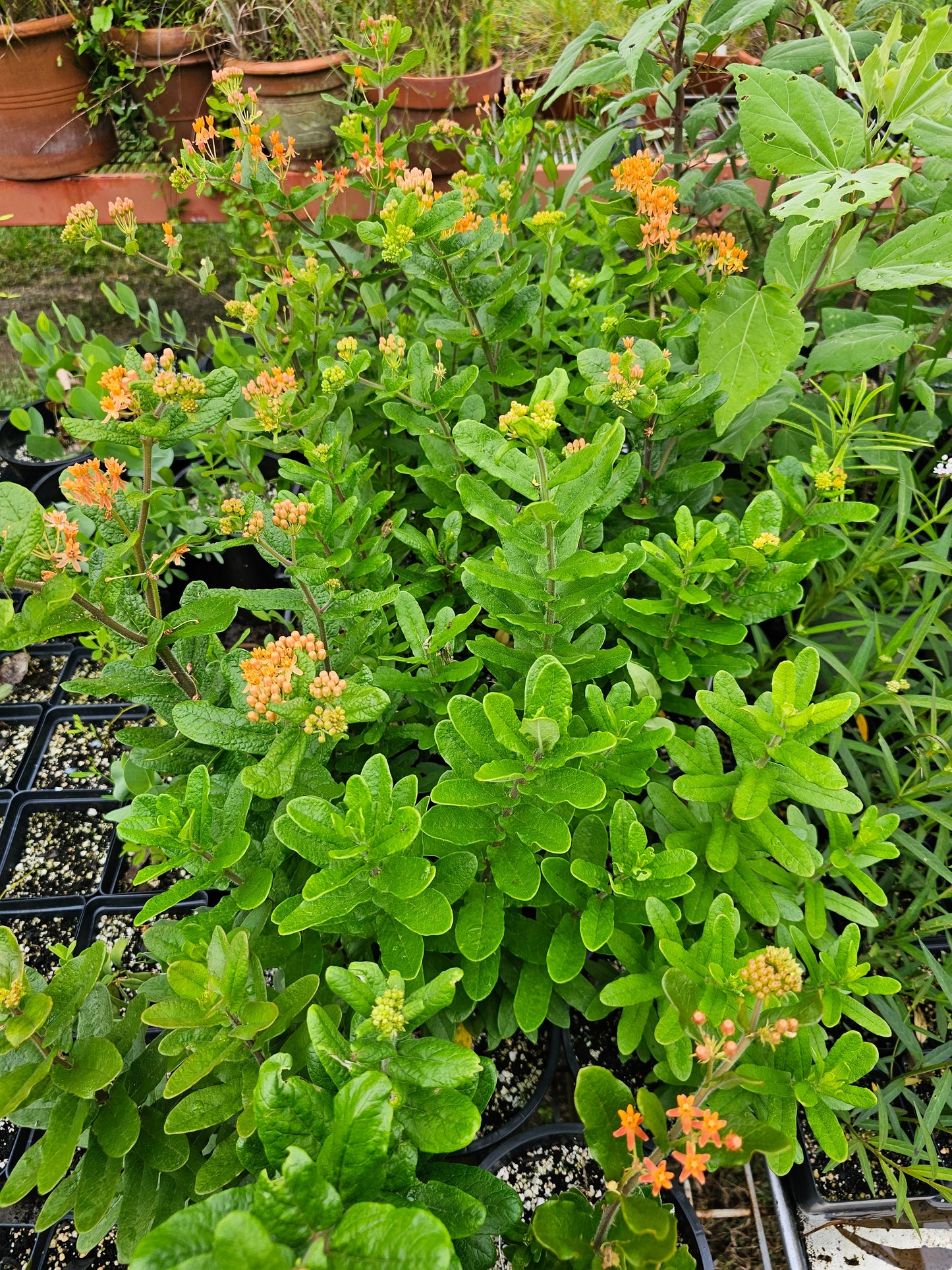Butterfly Milkweed
(Asclepias tuberosa) is a perennial that occurs naturally in sandhills, pine flatwoods, and other sandy uplands as well as along sunny roadsides. It is the larval host of Monarch, Queen and Soldier butterflies. It blooms spring through fall, attracting hummingbirds, bees and other pollinators.
Butterfly Milkweed’s bright orange to reddish flowers are born in showy terminal umbels. Each flower has a reflexed corolla and an upright corona — a characteristic typical of Milkweed flowers. Stems are rough to hairy. Leaves are coarse, narrowly ovate to lanceolate, and oppositely arranged. Seeds are born in erect follicles that dry and split open as the fruit matures. Each seed is attached to a white silky pappus that catches the wind and aids in dispersal.
Florida has two subspecies: A. tuberosa ssp. rolfsii is less bushy, has wavy leaf margins, and occurs throughout Florida. A. tuberosa ssp. tuberosa has flatter, narrow leaves and is often found in woodlands in northern Florida.
Asclepias tuberosa is an exception to the Asclepias genus in that its stem does not contain the milky latex that distinguishes the rest of the genus and gives it the common name “milkweed.”
Butterfly Milkweed is sometimes referred to as pleurisy root because Native Americans chewed the root of the plant to treat pleurisy. Today, it is commercially available as an extract and as a dried root powder.
Family: Apocynaceae (Dogbane family)
Native range: Nearly throughout
To see where natural populations of Butterflyweed have been vouchered, visit florida.plantatlas.usf.edu.
Hardiness: 8a–10b
Soil: Dry, well-drained, sandy soil
Exposure: Full sun
Growth habit: 1–3’ tall, with 1–2’ spread
Propagation: Seed, division, cuttings
Garden tips: Butterfly Milkweed is an excellent addition to butterfly gardens as well as any dry, hot landscape.
Caution: Do not confuse this plant with the nonnative Tropical Milkweed (A. curassavica), which is typically sold at big box retail garden centers. Tropical Milkweed does not die back in winter in Florida (as do native milkweeds) and can encourage overwintering in adult Monarchs. It is also linked to the transmission of the Ophryocystis elektroscirrha (OE) infection. Click for more information.
Florida Ecotype.





